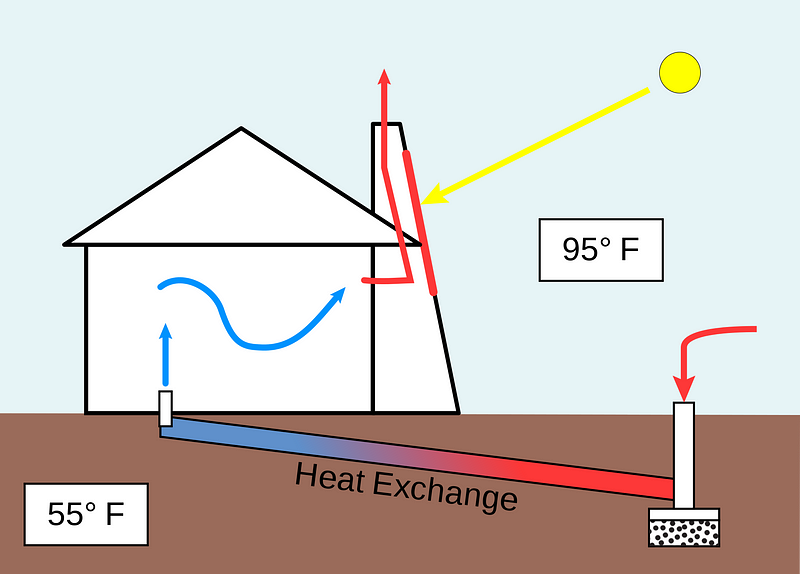In the era of climate change and rising global temperatures, the need for efficient building cooling methods has never been more pressing. Traditional air conditioning systems, while effective, consume a significant amount of energy and contribute to greenhouse gas emissions. However, there are alternative cooling methods that require little to no energy, making them both environmentally friendly and cost-effective. Let’s delve into some of these methods and understand their workings.

1. Wind Tower: Harnessing Natural Airflow
A wind tower is designed to pull warm air up and out of a building. This is achieved through:
- High Ceilings: Allows for better air circulation and heat dissipation.
- Wind Catcher: Captures and directs the breeze into the building.

2. Solar Chimney: The Power of the Sun
A solar chimney is an enhanced version of a ventilation tower. It leverages the stack effect, which takes advantage of height and temperature differences to move air. The sun shines into the high section of the chimney, and the surface where the sun hits should ideally be of a darker color to increase the temperature difference. This creates a more effective vertical draft, using the hotter air at the top as the “thermal engine” to drive the conductive airflow. To regulate this airflow, one can open or close windows, doors, and skylights. For instance, using a stairwell to allow hot air to rise can be controlled by adjusting a door at the bottom of the stairs.
3. Limiting Solar Gain: Keeping the Heat Out
Solar gain refers to the increase in temperature in a space due to solar radiation. To limit this:
- Shade: Use awnings or other shading devices.
- Window Placement: Avoid having too many windows on the east and west sides.
- Reflective Surfaces: These can reflect sunlight away.
- Tinted Windows: Reduce the amount of sunlight entering the building.
- Vegetation: Planting on walls and windows can provide natural shading.
4. Using Thermal Mass: Storing and Releasing Heat
Thermal mass involves using heavy, dense materials like concrete stone floors and plaster adobe walls. These materials can absorb heat during the day and release it at night, helping to regulate indoor temperatures.
5. Fans and Evaporative Coolers
While fans don’t cool the air, they circulate it, creating a wind-chill effect that can make the environment feel cooler. Evaporative coolers, on the other hand, use water to cool the air, making them ideal for dry climates.
6. Best Bets for Passive Cooling
According to the Rocky Mountain Institute, passive cooling measures can reduce energy bills by up to 40%. Some of these strategies include:
- Minimizing indoor heat generation.
- Weatherization through caulking, sealing, and weatherstripping.
- Insulation to reduce heat conduction.
- Window shading and glazing.
- Roof whitening and attic ventilation.
- Trees and landscaping.
Exploring New Cooling Methods
While the methods mentioned above are tried and tested, the quest for innovative cooling solutions is ongoing. Mother Earth News has highlighted various natural cooling techniques that can be explored further. Additionally, research into new materials and technologies promises even more efficient and sustainable cooling solutions in the future.
In conclusion, as we face the challenges of a warming planet, it’s imperative to explore and adopt cooling methods that are not only effective but also sustainable. By harnessing the power of nature and innovation, we can create comfortable living spaces while reducing our carbon footprint.
